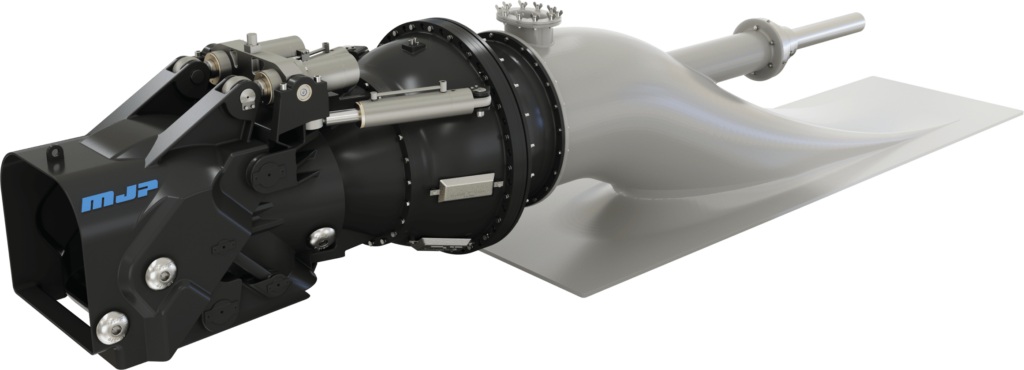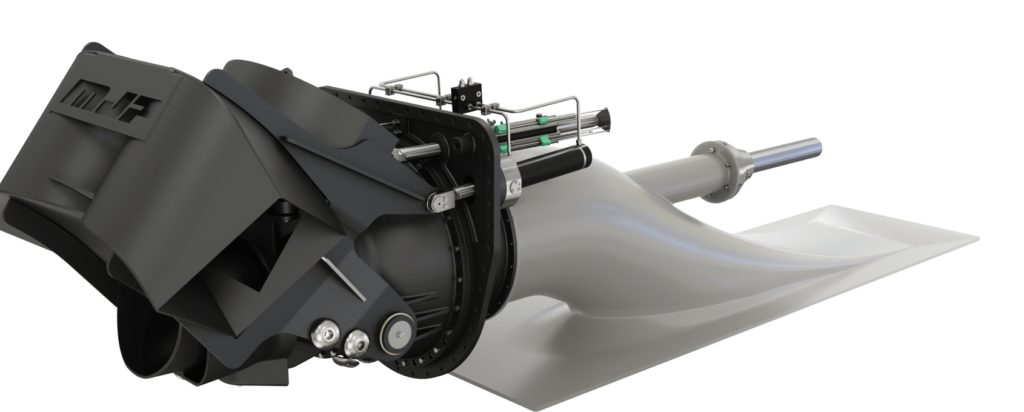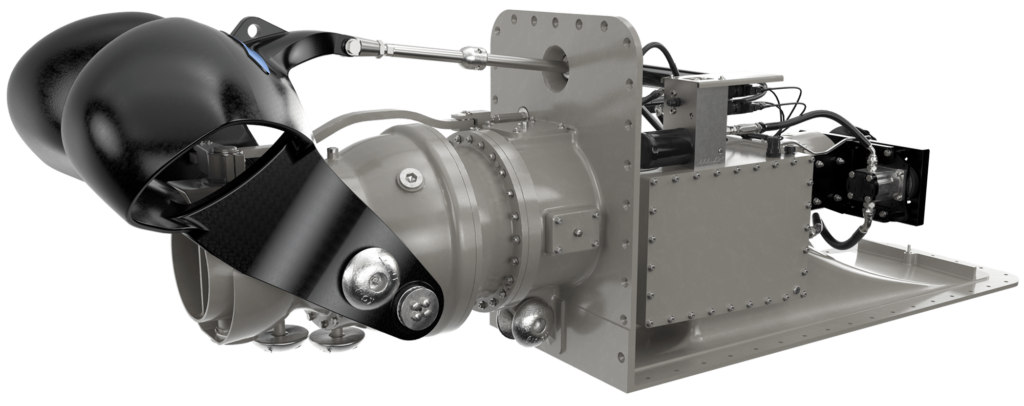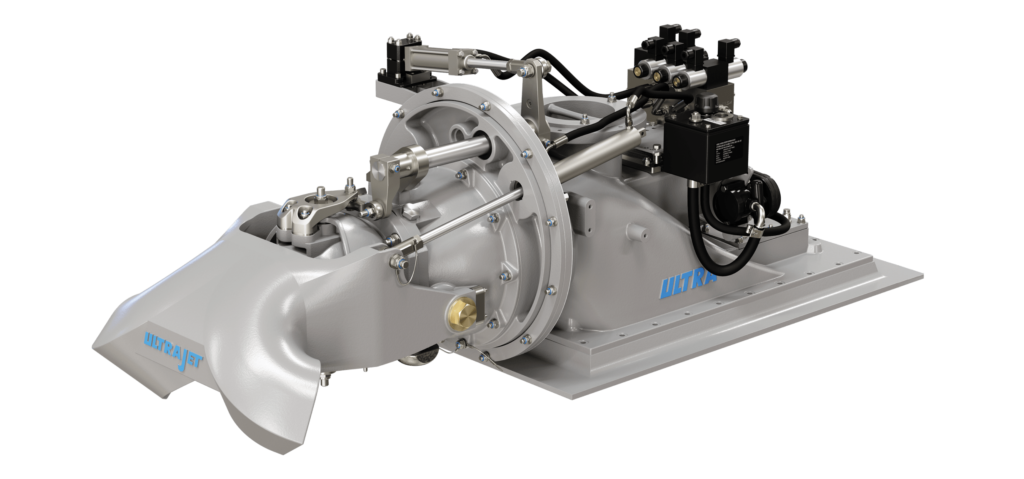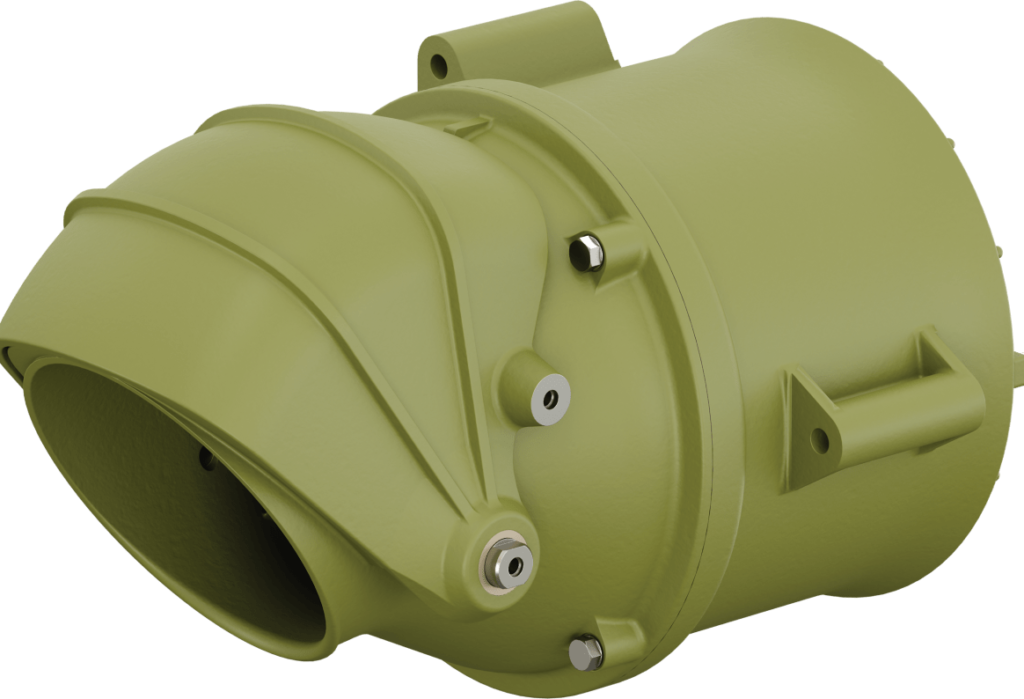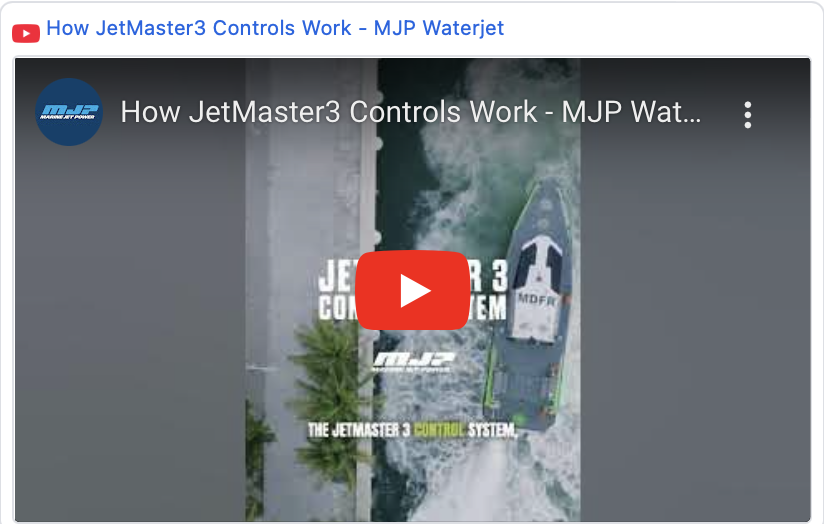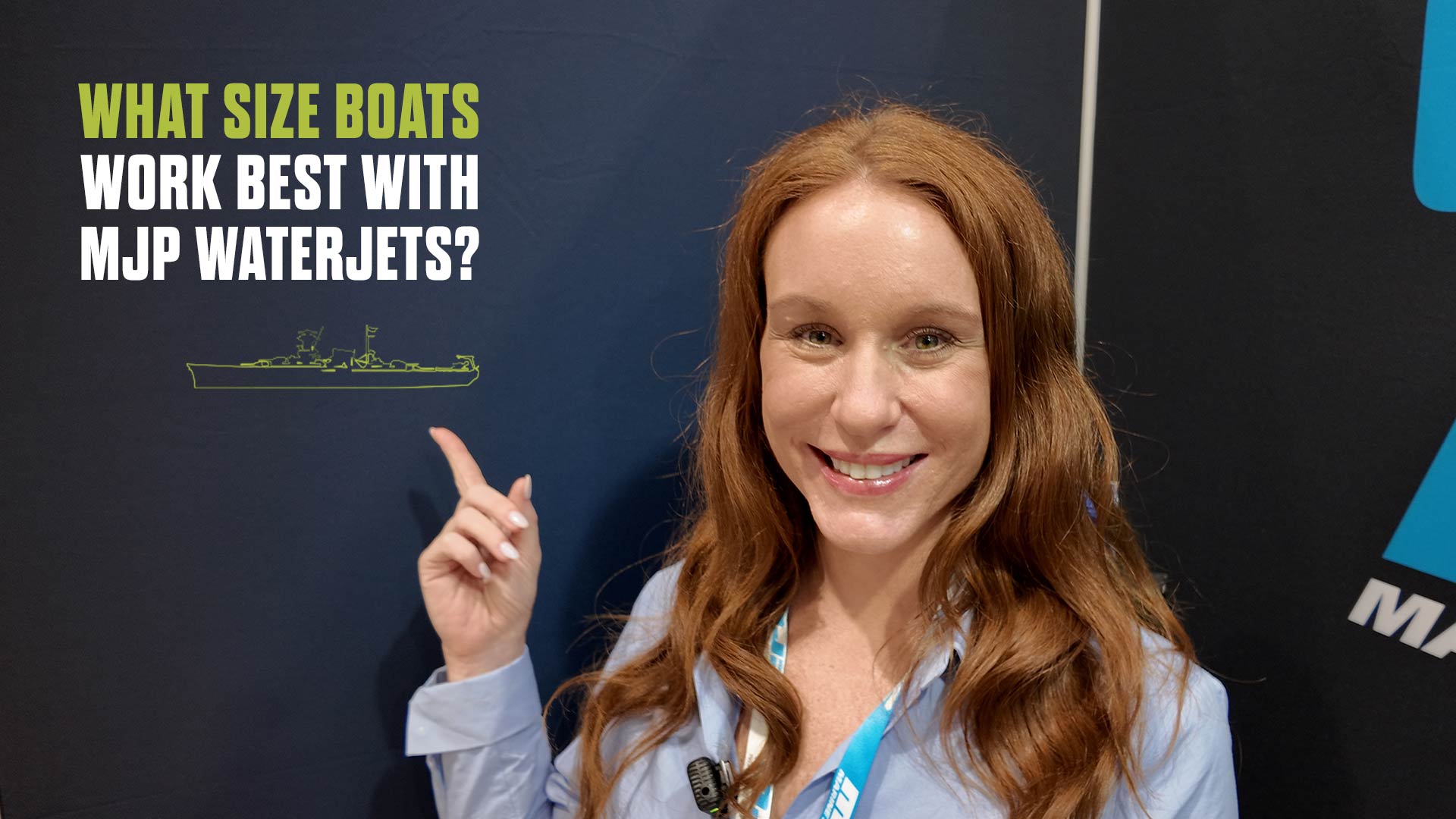What is a waterjet and how does it work?
Waterjets in essence are just large water pumps. A Waterjet works by generating propulsive thrust, created when water is sucked into the pump unit through an intake, located on the bottom of the vessel, and forced out through the impeller, propelling the vessel forward.
As the water exits the impeller it is pushed through the steering unit, which is comprised of two main components. A steering nozzle responsible for port and starboard movements, and a reversing bucket which is responsible for forward and reverse movements. The steering unit is what gives the waterjet powered vessel is unique ability to be highly maneuverable. Waterjets driven vessels can rotate on their own access, crab to the side and easily complete j-turn maneuvers as well as crash stops, also sometimes referred to as a bucket-stop.
By using water as the source of power, several traditional propulsion “problems” are solved. Waterjets can operate in shallow draft conditions, more efficient at high speeds and since there is no equipment below the vessel bottom waterjets are safer for swimmers in the water and better for marine life.
Waterjets by Marine Jet Power are suitable for vessels ranging in size from about 8m in length, all the way up to 200m. And can serve in a wide use of applications ranging from high-speed military craft, large coast guard ships, commercial workboats, ferries, fishing vessels, crew transfer vessels (CTVs) and high end yachts around the world.
Watch as waterjet expert Nils-Peter explains more in this video.
